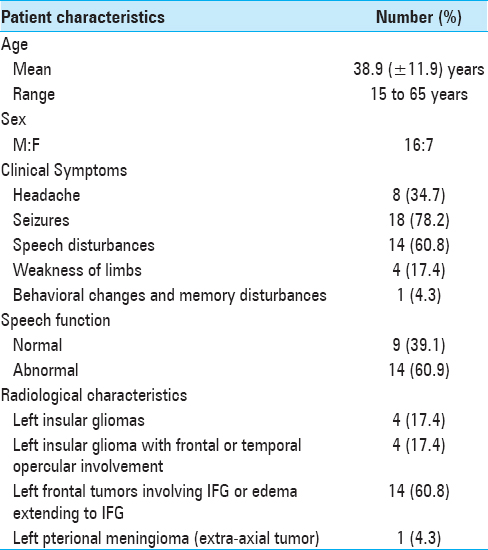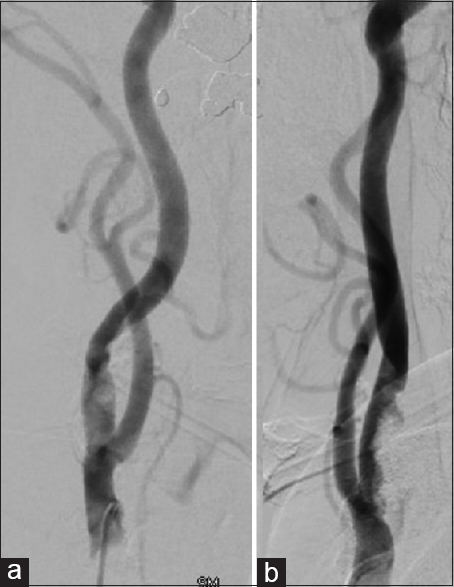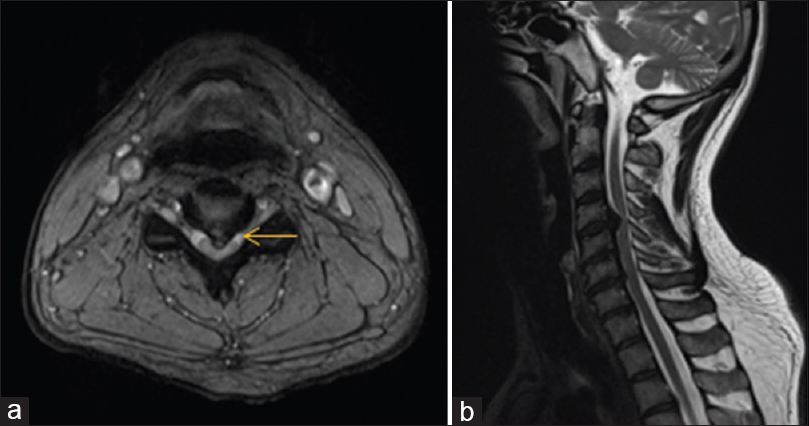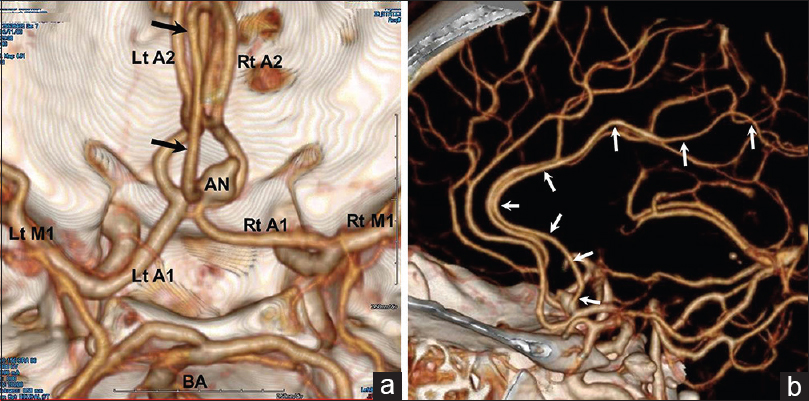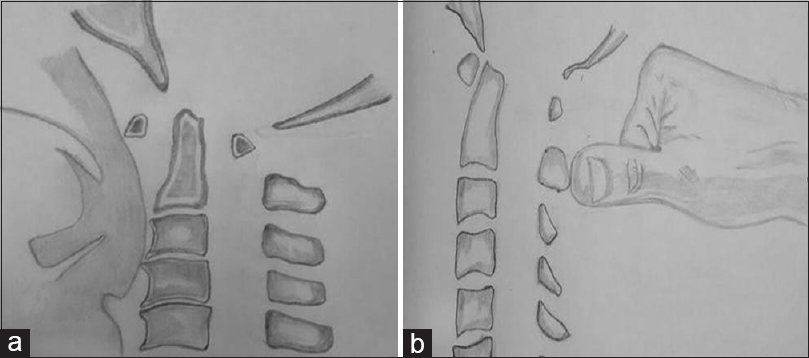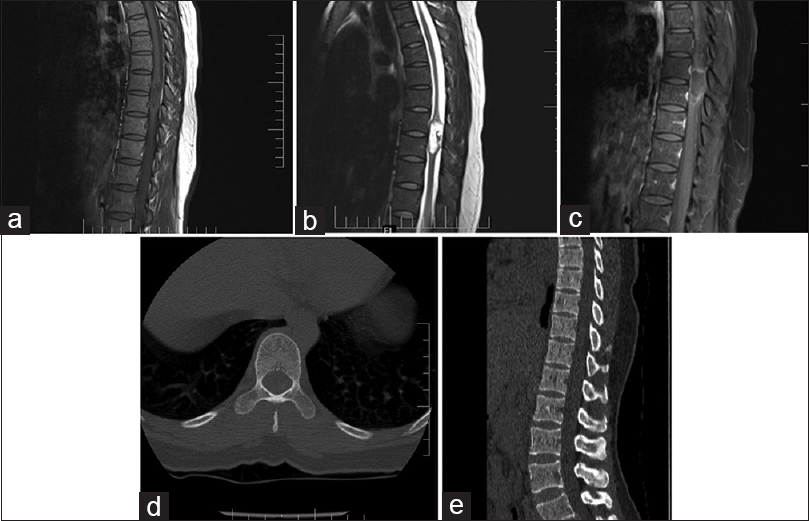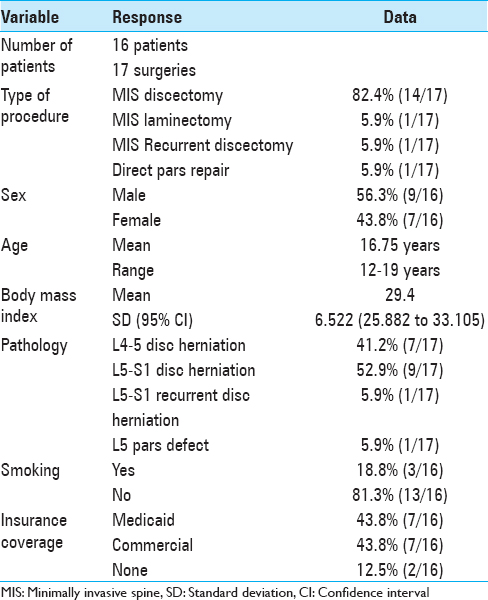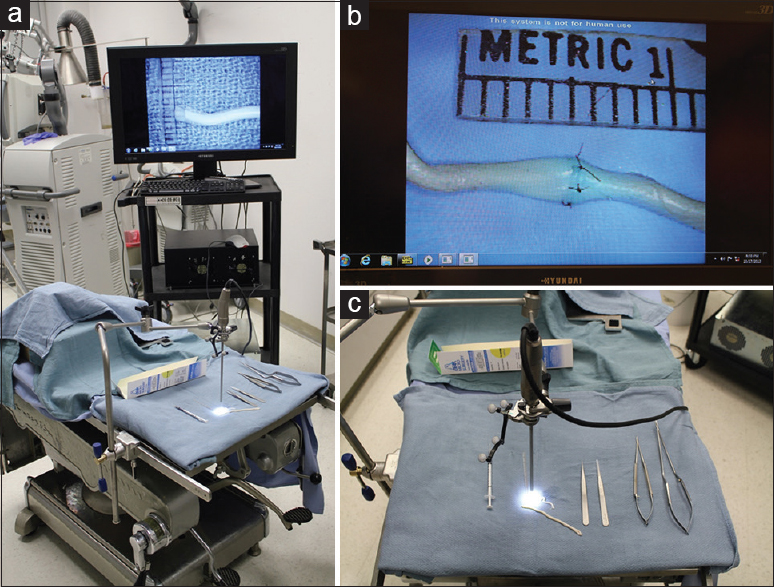Preoperative functional magnetic resonance imaging in patients undergoing surgery for tumors around left (dominant) inferior frontal gyrus region
Date of publication: 26-Jun-2018
Background:Preoperative functional magnetic resonance imaging (fMRI) helps to preserve neurological function and ensure maximal tumor tissue excision. We studied the lateralization and localization of speech centers in select cases of tumors around the left (dominant) inferior frontal gyrus (IFG).
Retained distal protection device during carotid artery stenting necessitating carotid endarterectomy: A complication and management considerations
Date of publication: 19-Jun-2018
Background:Neuroendovascular techniques have significantly altered the treatment paradigm of cerebrovascular diseases. Since the introduction of distal cerebral protection devices (DCPD), the incidence of embolic strokes during carotid artery stenting (CAS) has been significantly reduced. Treatment guidelines for retained foreign bodies in the cerebral vasculature do not exist.
Posterior longitudinal ligament and its implications in intradural cervical disc herniation: Case report and review of the literature
Date of publication: 18-Jun-2018
Background:Intradural disc herniations (IDH) are rare, particularly in the cervical spine, where they account for less than 5% of all discs. Adhesions between the ossified/calcified posterior longitudinal ligament (OPLL), dura, and ossified/calcified disc herniations increase the complexity of resecting these cervical lesions.
Microsurgical clipping for anterior communicating artery aneurysm associated with the accessory anterior cerebral artery via the pterional approach
Date of publication: 18-Jun-2018
Background:Accessory anterior cerebral artery (ACA), a type of median artery of anomalous triplicate ACA, is not rare, but aneurysms of the anterior communicating artery (ACoA) associated with accessory ACA can be a considerable challenge to treat surgically based on the morphological features of the ACoA complex.
Use of intraoperative X-ray to differentiate between reducible versus irreducible atlantoaxial dislocation
Date of publication: 18-Jun-2018
Background:The treatment and classification of atlantoaxial dislocations (AADs) remain controversial. Here, we utilized intraoperative X-ray to differentiate between reducible and irreducible AADs.
Adult intramedullary epidermoid cyst without spinal dysraphism: A case report
Date of publication: 18-Jun-2018
Background:Intramedullary epidermoid cyst (IEC), typically associated with spinal dysraphism, is rare, with fewer than 80 such cases reported in the literature. Here we present an adult with an IEC without spinal dysraphism.
Surgical removal of an arteriovenous malformation in the anterior perforated substance in a pregnant woman
Date of publication: 07-Jun-2018
Background:A tailor-made treatment is often required in arteriovenous malformations (AVMs) depending on the individual situation. In most cases, treatment strategy is usually determined according to the patient's Spetzler–Martin grade. However, in the present case, we were not able to treat the patient following the usual guidelines because of neurological symptoms and pregnancy.
Minimally invasive spine surgery in the pediatric and adolescent population: A case series
Date of publication: 07-Jun-2018
Background:There is scant literature evaluating the indications, techniques, and outcomes of minimally invasive spine (MIS) surgery undertaken for pediatric and adolescent spine pathology. Our study attempts to evaluate the safe and effective use of MIS techniques in pediatric and adolescent patients and to appreciate the technical nuances of MIS surgery for this age group.
Microvascular anastomosis under 3D exoscope or endoscope magnification: A proof-of-concept study
Date of publication: 04-Jun-2018
Background:Extracranial–intracranial bypass is a challenging procedure that requires special microsurgical skills and an operative microscope. The exoscope is a tool for neurosurgical visualization that provides view on a heads-up display similar to an endoscope, but positioned external to the operating field, like a microscope. The authors carried out a proof-of-concept study evaluating the feasibility and effectiveness of performing microvascular bypass using various new exoscopic tools.


